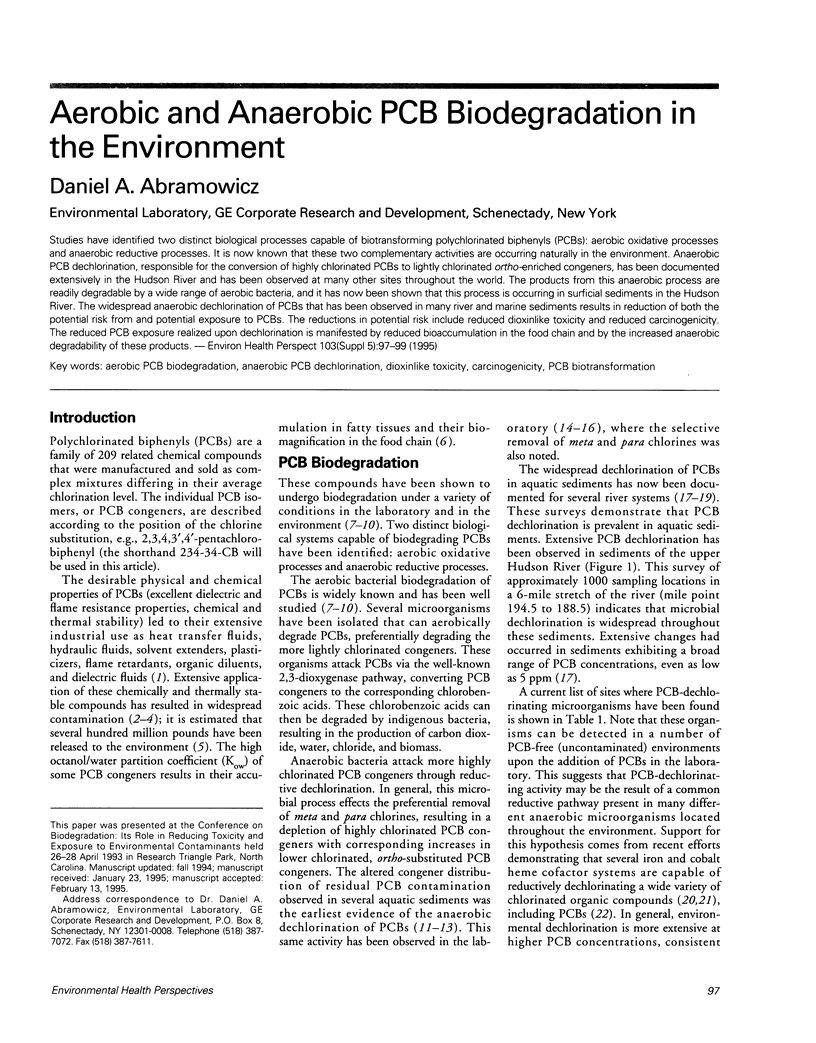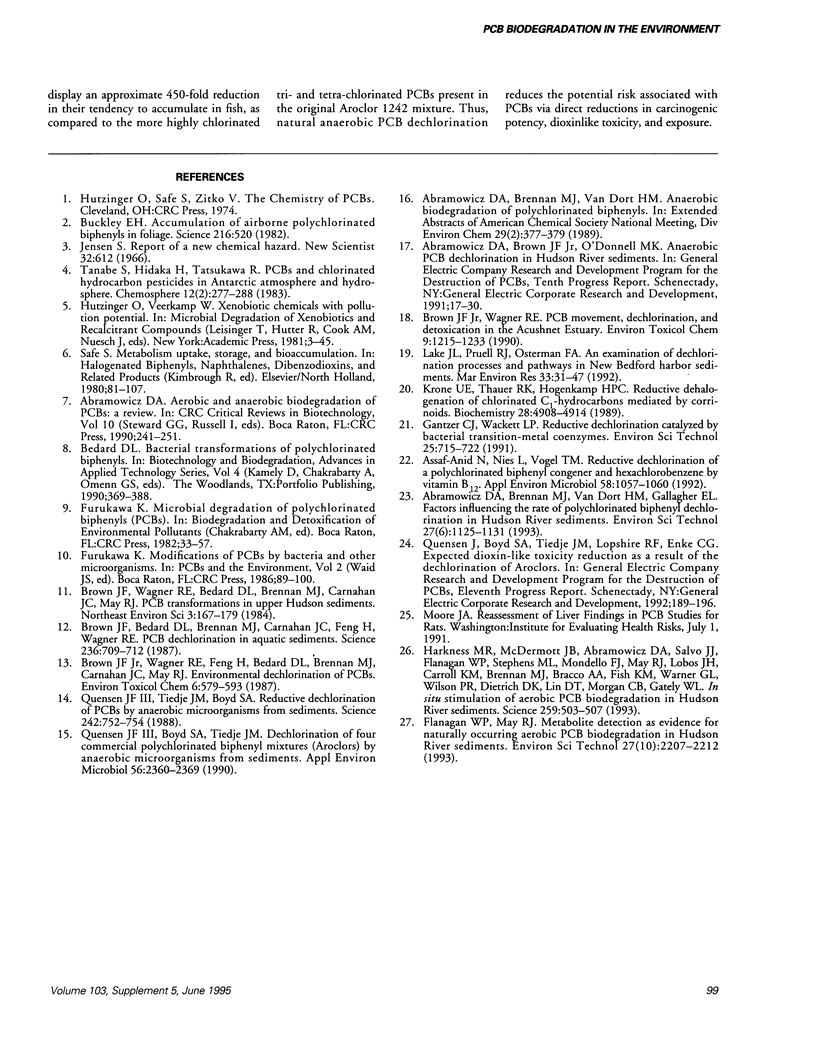Abstract
Studies have identified two distinct biological processes capable of biotransforming polychlorinated biphenyls (PCBs): aerobic oxidative processes and anaerobic reductive processes. It is now known that these two complementary activities are occurring naturally in the environment. Anaerobic PCB dechlorination, responsible for the conversion of highly chlorinated PCBs to lightly chlorinated ortho-enriched congeners, has been documented extensively in the Hudson River and has been observed at many other sites throughout the world. The products from this anaerobic process are readily degradable by a wide range of aerobic bacteria, and it has now been shown that this process is occurring in surficial sediments in the Hudson River. The widespread anaerobic dechlorination of PCBs that has been observed in many river and marine sediments results in reduction of both the potential risk from and potential exposure to PCBs. The reductions in potential risk include reduced dioxinlike toxicity and reduced carcinogenicity. The reduced PCB exposure realized upon dechlorination is manifested by reduced bioaccumulation in the food chain and by the increased anaerobic degradability of these products.
Full text
PDF


Selected References
These references are in PubMed. This may not be the complete list of references from this article.
- Assaf-Anid N., Nies L., Vogel T. M. Reductive dechlorination of a polychlorinated biphenyl congener and hexachlorobenzene by vitamin B12. Appl Environ Microbiol. 1992 Mar;58(3):1057–1060. doi: 10.1128/aem.58.3.1057-1060.1992. [DOI] [PMC free article] [PubMed] [Google Scholar]
- Brown J. F., Jr, Bedard D. L., Brennan M. J., Carnahan J. C., Feng H., Wagner R. E. Polychlorinated biphenyl dechlorination in aquatic sediments. Science. 1987 May 8;236(4802):709–712. doi: 10.1126/science.236.4802.709. [DOI] [PubMed] [Google Scholar]
- Buckley E. H. Accumulation of airborne polychlorinated biphenyls in foliage. Science. 1982 Apr 30;216(4545):520–522. doi: 10.1126/science.216.4545.520. [DOI] [PubMed] [Google Scholar]
- Harkness M. R., McDermott J. B., Abramowicz D. A., Salvo J. J., Flanagan W. P., Stephens M. L., Mondello F. J., May R. J., Lobos J. H., Carroll K. M. In situ stimulation of aerobic PCB biodegradation in Hudson River sediments. Science. 1993 Jan 22;259(5094):503–507. doi: 10.1126/science.8424172. [DOI] [PubMed] [Google Scholar]
- Quensen J. F., 3rd, Tiedje J. M., Boyd S. A. Reductive dechlorination of polychlorinated biphenyls by anaerobic microorganisms from sediments. Science. 1988 Nov 4;242(4879):752–754. doi: 10.1126/science.242.4879.752. [DOI] [PubMed] [Google Scholar]
- Quensen John F., Boyd Stephen A., Tiedje James M. Dechlorination of Four Commercial Polychlorinated Biphenyl Mixtures (Aroclors) by Anaerobic Microorganisms from Sediments. Appl Environ Microbiol. 1990 Aug;56(8):2360–2369. doi: 10.1128/aem.56.8.2360-2369.1990. [DOI] [PMC free article] [PubMed] [Google Scholar]


